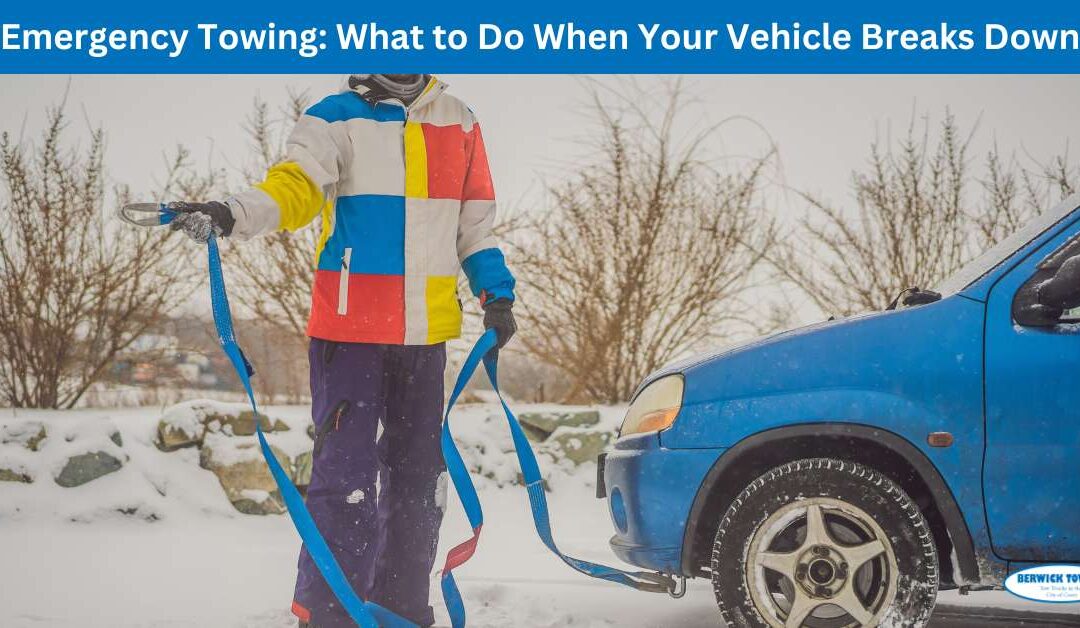A breakdown can happen when you least expect it, leaving you stranded on the side of the road with a non-functional vehicle. In such situations, knowing how to handle emergency towing is crucial for your safety and the well-being of your vehicle. This guide will walk you through the steps to take when faced with a breakdown, ensuring a smooth and secure towing experience.
Ensure Safety First:
The moment you realize your vehicle is experiencing issues, safely pull over to the side of the road, if possible. Turn on your hazard lights to alert other drivers, and if you have reflective triangles or flares, use them to create a visible perimeter around your vehicle.
Assess the Situation:
Before calling for towing assistance, assess the severity of the issue. If it’s a minor problem that you can fix yourself, such as a flat tire or a drained battery, and you have the necessary tools, attempt to address it. However, if the problem is beyond your expertise, it’s time to seek professional help.
Contact Roadside Assistance or Towing Service:
If you have a roadside assistance plan, contact them immediately. Many insurance providers offer towing services as part of their coverage. Alternatively, call a reliable towing service in your area. Be prepared to provide your location, a description of the issue, and any specific instructions for the towing company.
Communicate Clearly:
When calling for a tow, clearly communicate your location and any relevant details about your vehicle. If you’re unsure about your exact location, look for nearby landmarks, road signs, or mile markers to help the tow truck locate you quickly.
Follow Towing Recommendations:
Listen to the advice given by the towing service. They may have specific instructions on how to prepare your vehicle for towing or recommendations for the nearest repair shop. Following their guidance will help streamline the towing process and minimize potential damage to your vehicle.
Remove Personal Belongings:
Before the tow truck arrives, remove any valuable or personal items from your vehicle. This includes important documents, electronic devices, and anything else you wouldn’t want to leave unattended.
Know Your Destination:
Inform the towing service of your preferred destination, whether it’s a nearby auto repair shop, your home, or another location. Be sure to confirm whether the towing service can accommodate your request and if there are any additional charges for longer distances.
Ask About Costs and Payment:
Before the tow begins, inquire about the estimated cost of the service and the accepted payment methods. Some towing services accept insurance, while others may require immediate payment. Understanding the financial aspects in advance will help you plan accordingly.
Stay Informed:
While your vehicle is being towed, stay informed about its destination and the repair process. This information can be useful for planning your next steps, whether it involves arranging transportation or coordinating with a repair shop.
Follow Up:
After your vehicle has been towed and repaired, follow up with the repair shop to ensure everything was completed satisfactorily. If your breakdown was covered by insurance, contact your provider to report the incident and discuss any potential claims.
Conclusion:
Experiencing a breakdown can be stressful, but knowing what to do and how to handle emergency towing can make the process much smoother. By prioritizing safety, seeking professional assistance, and staying informed throughout the towing process, you’ll navigate breakdowns with confidence and ensure a swift return to the road.
If you are in Dandenong, Victoria 3175, and looking for a car removal service, this is the best way to visit us.
Contact Us
Berwick Towing & Transport
27B William Rd
Berwick VIC 3806
(03) 7035 7815
https://berwick-towing.com.au/

